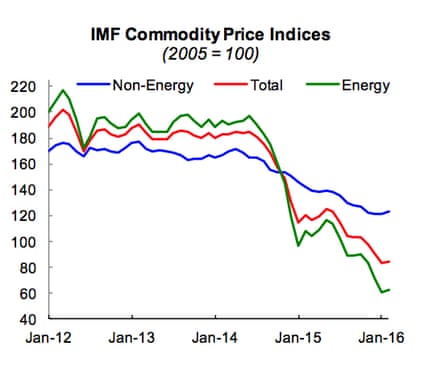The collapse in global commodity prices and a stronger US dollar have depleted the public coffers of some of the world’s poorest countries and will leave them as much as $61bn (£43bn) worse off this year, a report has warned.
The Jubilee Debt Campaign said that countries that relied on exports of commodities such as metals and oil had seen government revenues hit by a global markets rout last year that knocked the prices of crude oil, iron ore, copper and other raw materials to multi-year lows.
At the same time, a drop in their currencies against the US dollar were making it harder for governments in poor countries to make debt payments in dollars, the anti-poverty campaigners said.
“Many impoverished country governments are being hit by the fall in prices for the commodities they export, and large depreciations of currencies against the dollar,” said Tim Jones, economist at the Jubilee Debt Campaign.
“This is reducing government revenue, and increasing the relative size of debt payments in foreign currencies. On top of this, less tax is being collected than had been expected.”
Commodity collapse

The analysis of low and lower middle income country governments showed their external debt service payments in 2016 will on average be 10.8% of government revenue, compared with 6.1% predicted three years ago.
Publishing the findings ahead of the International Monetary Fund (IMF) and World Bank’s spring meetings later this week, the campaigners called for more help for poor countries struggling with high debts.
“In the 1980s commodity prices crashed and the US dollar rose, and the result was 20 years of debt crisis and large increases in poverty. To ensure history is not repeated, urgent global action is needed to cancel debts owed to reckless lenders, tackle tax avoidance and evasion, and change global trade rules to enable countries to diversify out of basic commodities,” said Jones.
The authors calculated the figures by comparing IMF and World Bank predictions made in 2012 and 2013 for GDP, government revenue and debt payments with those produced between August and December 2015.
Numbers were available for 18 countries and the average losses calculated from those 18 were then applied to a further 33 countries. Taken together, the blow from lower commodity prices and weaker currencies left the 51 countries analysed as much as $61bn worse off in 2016 and $53bn worse off in 2017.
For comparison, that 2016 shortfall was $13bn more than the $48bn of aid spent in the 51 countries, Jones said citing figures from the Organisation for Economic Co-operation and Development.
Jones highlighted the case of Sierra Leone’s economy, hit both by the Ebola crisis and the collapse in the price of iron ore. Government revenue in 2016 is now expected to be $470m, compared with a prediction of $760m three years ago. However, debt payments in 2016 will be lower than previously predicted, primarily because of a suspension of debt payments to the IMF in response to the Ebola outbreak.

Comments (…)
Sign in or create your Guardian account to join the discussion